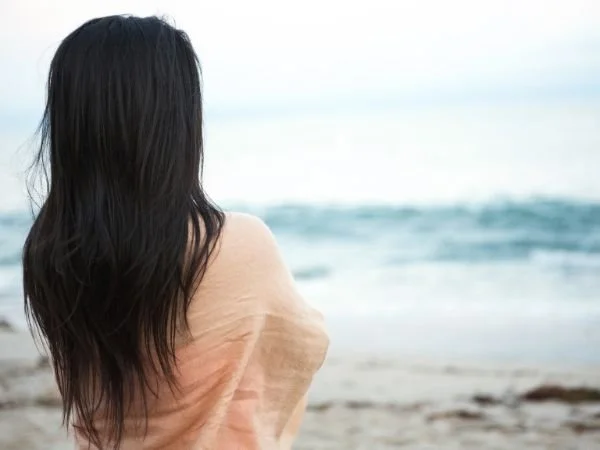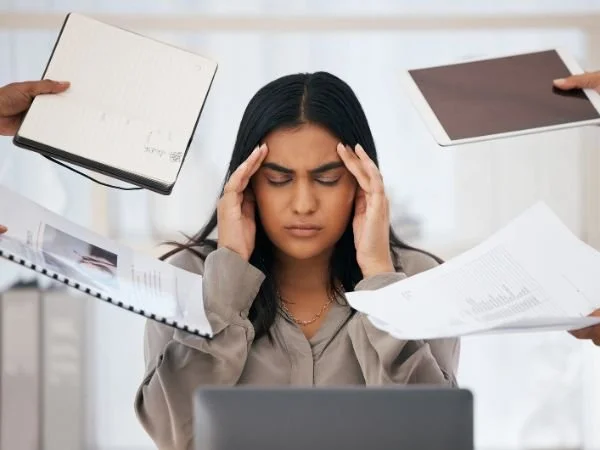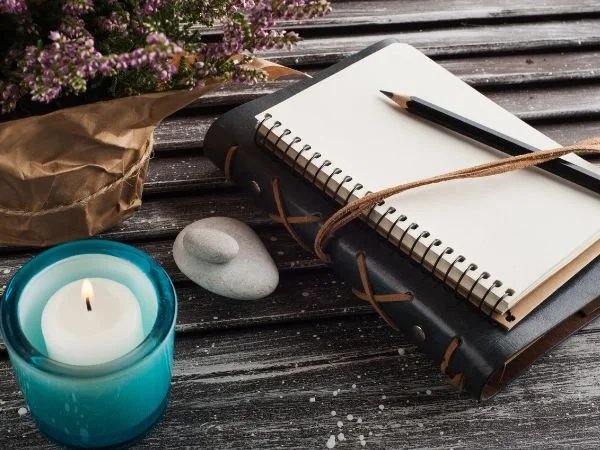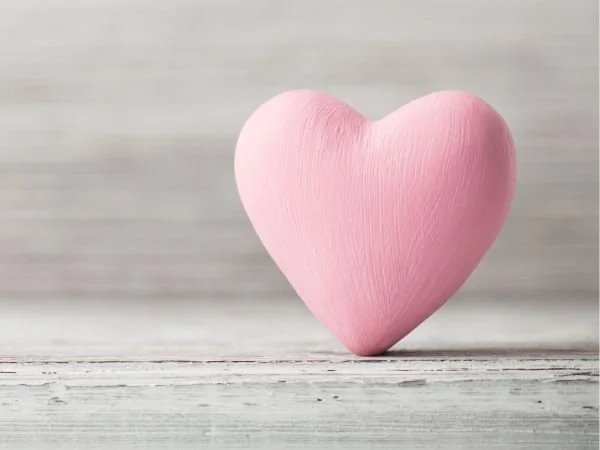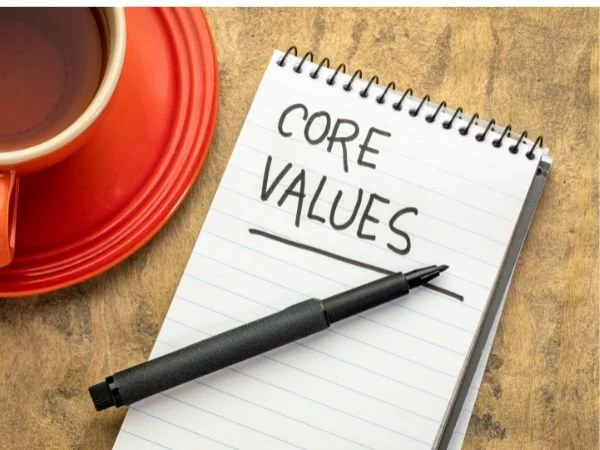53: 3 Things that Helped Me to Heal from PTSD (Post Traumatic Stress Disorder)
PTSD (Post traumatic stress disorder) is a common side-effect of experiencing trauma. In this episode I discuss my own journey with PTSD, my post traumatic stress disorder symptoms, and three things that helped me to heal from PTSD.
This post contains affiliate links to some of my favorite tools and resources. As an Amazon Associate, I earn from qualifying purchases. Full terms & conditions here.
Meditation 🧘♀️
Similar Episodes 🎙️
Book Recommendation 📚
The Body Keeps the Score: Brain, Mind, and Body in the Healing of Trauma by Bessel van der Kolk
Waking the Tiger: Healing Trauma by Peter Levine
Timestamps ⏱️
0:00 Introduction
00:32 What is PTSD
5:21 1st thing that Helped Me to Heal PTSD
12:11 2nd thing that Helped Me to Heal PTSD
17:17 3rd thing that Helped Me to Heal PTSD
21:27 Honorary Mention
Have you followed and left a review for New View Advice?
Let me know what you think of the podcast! Podcast followers and ratings help bring new listeners to the show, as well as help me to continue creating content. So if you enjoyed the show, I’d love to ask you to follow and leave a rating on your podcast platform by:
Head to New View Advice on Apple or Spotify
Click Follow on your podcasting platform
Scroll down (or when promoted) click the 5 star rating!
-
This podcast was transcribed by an AI tool called Otter. Please forgive any typos or errors.
Amanda Durocher 0:00
Welcome to New View Advice. I'm your host, Amanda Durocher. And I invite you to join me here each week as I offer advice on how to move through whatever problem or trauma is holding you back from living life to the fullest. Let's get started. Hi, beautiful souls. Thank you for joining me for another episode of New View Advice. If you're new here, this is a healing centered advice podcast where I offer guidance for the healing journey. I believe you have all the answers you seek, you just may need a new view along the way. Thank you for joining me for today's episode.
Amanda Durocher [What is PTSD?] 00:32
Today we will be discussing PTSD. And PTSD stands for post traumatic stress disorder. It is a symptom that happens when many people experience traumatic events. Post Traumatic Stress Disorder is really when the trauma continues to live in your body. And the stress of the event does not leave after the event and you actually feel as though you're reliving the event in your body if you're conscious of that or not. This episode will be about my journey with PTSD. And I'll be sharing three things that have helped me to heal from PTSD. And one honorary mention. I know for me, I've thought that PTSD was something only war veterans had. And it was something displayed in movies. And it seemed like it was crippling. And sometimes it can be. But I had a misconception of PTSD when I first heard of it. And it wasn't until I was healing from sexual assault in my mid 20s. That I learned that I hadn't PTSD. I had a therapist who when I first started seeing her diagnose me with PTSD and a light bulb went off in my head. I went home and googled it and I was like, oh my god, this is exactly what I have. And I believe that labels can be helpful, because they can help us know we're not alone. I also think labels can be harmful because we can over identify with labels, like I am anxious, I have PTSD. And I think that it's important not to overly identify with these and to use them more as guiding posts when we are healing, to know that there is a path for healing. So learning I had PTSD showed me a path for healing that the things I was struggling with didn't have to last forever and that there were tools I could use and start to embrace to assist me on the journey healing from PTSD. So today, I am going to share with you three ways that have helped me to heal from PTSD. A disclaimer that this is my journey. This is what has helped me. If PTSD is something you think you may struggle with. I invite you to see a doctor. This episode will be very much about my journey and just opening awareness to what PTSD is, and things that have helped me to heal because I know that PTSD is not just for war veterans, and so many people in this world are walking around with PTSD from traumatic incidents. Post Traumatic Stress Disorder is a symptom of trauma. It happens for so many people. And it's when the trauma continues to live in the body after the traumatic incidents. So many people who experienced trauma have lifelong effects after the trauma, and these can be healed, but it takes time for the body to release the trauma. And everybody's journey home to self is different. Before we start, I want to let you know that I'll be posting a free meditation to my YouTube channel to help you with the next step of your healing journey. And to assist you in healing this perpetual feeling of unsafety. And to mention that some of my PTSD symptoms, how I knew I had PTSD. And how my therapist knew to diagnose me with PTSD was that I struggle with nightmares, sometimes night terrors where I wake up in a panic and a sweat from reliving the horrible things that have happened to me, and will go through periods where I really struggle with reliving what I survived, where it plays like a movie in my head on repeat, and I have trouble shutting it down. I also can get really triggered by things that remind me of the trauma I've experienced. For example, if I think I see one of the people who assaulted me, there's a really defining characteristic about one of the people who assaulted me. And whenever somebody has that same characteristic, I can get really triggered. Also, hyper vigilance is a side effect of trauma and a sign of PTSD. So hyper vigilance is when you don't feel safe in your body. And so in certain situations, you remain hyper vigilant, which is in fight or flight mode or stress mode. But it's when you stay very alert when you're out and about, I find for me, I can still be hyper vigilant among other people, but I'm not so hyper vigilant when I'm alone or when I'm with my partner. So the reason I think it's important to heal from PTSD is because what we are searching for when we are healing from PTSD, and when we're healing from trauma in general is safety. So many of us who experienced trauma live in a way where we feel unsafe in almost every circumstance, and coming home to ourselves. Being a safe place involves healing the trauma and releasing the trauma from our body. And that's what these practices I'm going to mention today have helped me to do. They've helped me to release
the trauma that was living in my body and was causing me to feel unsafe in everyday circumstances, even though I wasn't still experiencing the trauma that I had survived. That's a quick intro to today's episode. And let's jump into three ways that have helped me to heal from PTSD.
Amanda Durocher [1st thing that Helped Me to Heal PTSD] 5:21
Before I get to my recommendations, I wanted to mention the importance of patience and self compassion with yourself throughout the process of healing from PTSD. Healing PTSD is not easy, and it takes a lot of time and a lot of love. And as I talked about my own journey with PTSD, yours may be very different. And that's okay. The healing journey is unique to you. And what works for me may not work for you. I'm offering this as a guiding post for you to maybe look into some of the things I mentioned here and to see if one of them works for you. It is not for you to go copy everything I've done, because that likely won't work for you. Because this is a very individualized and very personal journey. Healing from PTSD is probably what has taught me patience, because I was very impatient when I started healing. And I just wanted to be dun done, done, done, done. And healing isn't like that. We're not just done healing. We heal layers at a time things continue to arise. And our bodies continually show us what the next layer is as we create more safety within us. So it's not about obsessing about the healing. It's about learning to be patient with ourselves. And I'm sure as hell not perfect, but the healing journey has taught me to be more patient with myself and others more compassionate with myself and others. And a big part of that was my healing from PTSD. Okay, so the number one thing I did to heal from PTSD was to find safe places and safe people to assist me in healing, and to work with different therapy models. So I found in my own journey, that this was something I could not do alone. As I am working on my memoir, I'm outlining my healing journey from disassociation. So what I mean by that is that my healing journey from sexual assault started at about 25. When my memories of being sexually assaulted as a child came back, I lived most of my life not remembering that this happened to me. And when that happened, all the PTSD became very apparent. So there was a lot of replaying of thoughts in my head. And there was a lot of trauma responses that became to the surface that honestly were there my whole life, but they became front and center after my memories came back. And I tried to heal by myself, for about six months, I tried to figure this out on my own, and I could not, I got to a point of suicide if I'm honest. And it's when I realized I needed help, I could not do this alone. And so I found a therapist who did EMDR, which I'll talk a bit more about, and also did group therapy. So those were two of the first safe places I found to dive into my PTSD. So through therapy, I did EMDR, which is eye movement, desensitization reprocessing, and it's a therapeutic technique for people who struggle with PTSD. And it's a somatic technique to help you to bring a emotionally charged memory back to neutral. So I started doing this with my therapist, and I found it very helpful. Now, I have noticed that people on the internet say that this will heal your PTSD, I did not find that to be the case for me, I found that it assisted me. It has taken many, many different modalities, many, many different things to help me to heal from the things I have survived. One thing did not do everything for me. I have needed many different healing modalities along my journey personally. So talking about my PTSD, talking about the trauma, I survived, talking about how unsafe I felt all the time, and also doing EMDR for the really painful memories was a great starting point on my healing journey. Group therapy was also really helpful for me. So I joined a sexual assault survivor group. And this was one of the most healing things I've done. So I have been a part of multiple sexual assault groups. And I go to them usually at low points when I'm feeling very alone. And I'm feeling like nobody understands what I've survived, and nobody will ever understand. And nobody will ever be able to see me and the pain that I've experienced. All I can say about group therapy is that that has been a place for me where I am seeing and where I see others and where I see myself and others. And where I know I'm not alone. And where I know that everything I am dealing with is part of the process. And where I learned the healing from sexual assault, healing, from grief, healing from rape, are things that have a lot of symptoms that we don't talk about as a society because it makes people too fucking uncomfortable. I am so grateful for the places I get to go and talk about the things that make people uncomfortable. It's a reason I started this podcast, I feel like there aren't enough places where it's okay for me to talk about the things that make people really uncomfortable. Another type of therapy I did this fall was equine therapy. And that was really helpful for my PTSD. So in the fall, I became really aware that I still had a very hard time trusting people. And I realized I didn't trust others, because I actually didn't trust myself. So that was like a big insight I had for myself in August. And so in September, I went looking for help. And because I have trouble trusting people, or I did at the time, I'm still working on it, let's be honest. And I had read somewhere that horses are a good in between. And I can attest that that was true, that working with horses and learning to trust animals was a great stepping stone for helping me to learn to trust people. Because when you work with horses, you have to be grounded. So you have to be alert. And you also have to trust yourself, they're going to follow you and your lead. So you have to be really confident in yourself. And so by working with horses, I learned how to trust myself more, which helps me to trust others, because I trust myself to know my boundaries, in other circumstances. So I found equine therapy to be really, really healing and helpful on my healing journey. And another kind of therapy that was helpful for me on my healing journey that I've used with all my different therapists are different somatic techniques. So doing the bottom up approach is really the somatic approach. And it's grounding into your body and becoming aware of your body and what it's communicating to you. Rather than starting in the head, you're starting in the body and somatic therapies are really helpful for trauma survivors, because the trauma lives in the body, so you can't just talk it out, it has to move, we have to find different ways to move the trauma. So those are different therapies I've used. But for me, the most helpful thing to heal from PTSD was to find safe places. And for me, this was professional help. I didn't really have anybody in my life who was able to hold the space for what I've survived.
Amanda Durocher [2nd thing that Helped Me to Heal PTSD] 12:11
The second thing that helped me to heal from PTSD was to develop a meditation practice. I talked about meditation a lot on the podcast. And it's because it's one of the most helpful things for my own healing journey. And meditation has been around for 1000s of years, meditation is a proven practice, to help us to heal, and to help us to connect with our inner world. Because what I learned throughout healing from PTSD was the importance of not running away from the trauma in my body. In order to process the trauma, I had to begin sitting with each layer of trauma, I had to begin sitting with the memories, I had to begin sitting with the feelings, I had to begin sitting with my inner child who experienced so much pain, I had to begin looking at the belief systems I created because of what I survived. And as ways to remain safe. I had to begin to dive into my inner world and how the way I lived in the world was so created based off the trauma I survived, and how I was still functioning from this traumatic place. I did that through meditation. I did that by learning how to sit in my shit, for lack of a better phrase, I learned how to sit with myself. And a lot of it wasn't pretty. And a lot of it was really painful. But I slowly learned how to stop running from myself, and how to stop avoiding the parts of me that so desperately needed attention. And I believe that's true for most people. So many people are running from themselves. So PTSD often triggers really intense emotions, and memories and learning to sit with the fear that was arising and allowing it space helped me to heal, sitting with the terror and the panic, knowing that these are just feelings and that they too shall pass was very healing for me. And again, this goes back to the first one where if you're too afraid to sit with your own pain, because it was so scary for you, or because it's so hard for you to look at. That's okay. Find a safe person to start helping you dive into it. Many times our fears keep these emotions from being fully felt. And we begin to leave our bodies and I found that meditation is a helpful way to allow myself the space to feel hurt feelings. Meditation also connects us to our breath which connects us to our body. The breath is a very healing tool we have in every given circumstance. I connect back to the breath and I remind myself to connect back to the breath many, many times throughout the day. When I have a negative thought arise, I connect back to the breath When I have a difficult feeling arise, I connect back to the breath. The breath is a tool to help us to ground and to reset. And to slow down. Many times when we start to feel panic or terror or stressed, we start to cycle upwards, I see it like a tornado that's going up, up, up, and the breath will start to slow you down, and bring you back down into the ground, in a good way, grounded, and I found meditation and the breath to be helpful on my healing journey. The breath has been a important tool for me to lean into as I've healed from very painful memories. And in meditation, through this practice of starting to sit with ourselves, to start to sit with the emotions, and just sit with the painful memories, we begin to witness the trauma. It's still painful, but we learn to watch it and to remove ourselves from it rather than reliving it and getting stuck in it. We learn to witness it, we learn to see it, we learn to stop overly identifying with it. meditation helps us to relax and be in the body and not in the trauma. I just found in my own life, that learning to sit with myself and to stop running for myself takes time. But through this process, I created safety within myself, which is what I was really searching for when healing from PTSD was safety. And through my own healing journey, I have become the safe space I was always looking for. And I have never given myself a greater gift than creating safety within myself. No one can take that from me. And that's the beautiful thing of healing is that nobody can send you backwards. When you peel back a layer, it's gone. A new layer may arise and you may go damn, I thought I dealt with that. But you're a new person every time you heal you sit with and you process your emotions. And I think that's freaking beautiful. I also want to mention here with meditation that I will be uploading a meditation to my YouTube channel that you can check out to help you to connect with yourself and to connect with your own heart.
Amanda Durocher [3rd thing that Helped Me to Heal PTSD] 17:17
My third recommendation that helped me to heal from PTSD was leaning into creativity and channeling my PTSD and my trauma into creative outlets. Leaning on creativity during times of triggers helped me to relax and to come back into the present moment. It also helped me to be that witness that I mentioned in meditation, that by channeling my PTSD into my writing or into my art, I was able to be the witness to the pain and the suffering and the trauma rather than living in it, I was able to create distance, which helped me to create safety within myself, and helped me to process the trauma and to see that I wasn't reliving that trauma in the moment. That's something that happens when we have PTSD is that we're reliving the trauma as if it's happening right now, because it's stuck in the body. And through these different healing modalities that I've mentioned, it helped me to create the distance within myself to see that I was not reliving that trauma right then in there, and that I was safe in the moment and that these emotions too shall pass. And I wouldn't have considered myself a creative person before my healing journey. In my early 20s. I wasn't creative at all. And in my childhood, I wasn't creative. I leaned away from creativity as a child because of the grading scale in my school system. And when I was really young, I would get bad grades on creative projects. But I was a very intelligent child. So do really well in writing and in math and things like that. But my artwork, or my creative writing would get bad grades. So I stopped being creative because I didn't like any bad grades. And so I leaned away from it because of the criticism. And it wasn't until my friend Dolan died in my early 20s. I've mentioned that before, but my healing journey started before my memories of sexual assault. But it started when my friend died in my early 20s. And that is when I started to lean into creativity. And I haven't stopped since I'm obsessed. But your creativity may look different than mine. Art helps me to move the difficult feelings and can also help me process the stories and events playing in my head. So I've written thrillers and horror movies based off of what I've survived and I get to explore the different characters and I get to create the narrative and I get to create the outcomes of the different characters, which is really healing for me that I get to control what happens and we don't control life but the creative process has helped me to heal through taking back my power and taking back my voice. I also use painting I love to tie dye. I love the color. All these ways have helped me to process PTSD. And they also helped me to process after a really hard therapy session, I often continue to integrate what has happened after therapy. So what I found throughout my own life through being in therapy for a long time now is that oftentimes after the hour, I can't just go back to doing my work, I need time to process I need time to continue the thoughts that are coming through my head or continue allowing the feelings to rise or to just allow my body to relax, say I cry for an hour, my body needs a break, it needs to integrate that healing and it needs to feel safe again, it can't just jump into something else that needs a moment, right, we need rest. And a lot of times creativity and our feels restful for me. So tie dye and the coloring are things I often do after really difficult. healings are really difficult episodes are really difficult feelings. And I believe that art creates safety because when we're too afraid, tired or triggered to sit with our hard feelings, our heart experiences, we can process emotions and these experiences through art. And also with creativity. I'm going to throw writing and journaling in here, writing poetry and journaling about what lives in my head has been very, very helpful for healing from PTSD as well.
Amanda Durocher [Honorary Mention] 21:27
So today, I also wanted to mention a fourth thing that's helped me to heal from PTSD. And this will be my honorary mention for today's episode is yoga. Yoga is the fourth practice that has helped me to heal from PTSD. And I'm not talking about intense yoga, I'm talking about yin yoga, I'm talking about yoga nidra. I'm talking about slow yoga, because yoga has helped me to slow down, to get in my body, to be intentional with my body and to allow some of the emotions that get stuck in the body to move. So slow yoga has helped me to feel some of these feelings that are stuck. There are many times I just start crying. When I get into a certain pose. For me, it's a lot of the poses around my hips. I hold a lot of the trauma I've experienced in my hips that's very common for sexual assault and rape survivors. And yoga has helped me to slowly release these. This is one that I've recently been leaning into. I was really resistant about yoga for a while. And it was because I just had too hard of a time being in my body, it was just too hard. There were just too many emotions to be felt. And so yoga is something I've leaned into later during my healing journey.
Amanda Durocher [Outro] 22:42
Thank you for joining me for today's episode, I hope someone found something helpful. I wanted to offer this personal take on PTSD, because I think there's a lot of intellectual information out there. And there's a lot of studies, but I know on my own healing journey, I always found people's stories and personal experiences a lot more powerful than what a study or what an article says is the way to heal. So I hope somebody found something helpful. I wanted to let you know that if you are unfamiliar with my website, it's newviewadvice.com. And on my website, I have a lot of free resources. So I have different meditations and I'll have a meditation that goes with this episode. I have journal prompts and different blog posts to assist you on the healing journey. I'm always updating that so if you're interested in checking those out, you can visit my website at newviewadvice.com Thank you again for joining me for another episode of New View Advice. As always, I hope I was able to offer you a new view on whatever you may be going through. Send you all my love. See you next time.
Transcribed by https://otter.ai




